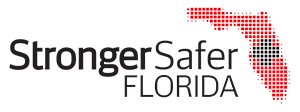
IN CASE YOU MISSED IT
In a recent column published by the Florida Times-Union, Vivian Young, Communications Director for the statewide nonprofit 1000 Friends of Florida, writes while many rightfully fear flooding during hurricane season, our state has become more vulnerable to flooding and erosion as a result of sea level rise, which now affects our state even when the tropics are quiet.
Young highlights a number of Florida’s cities challenged by sea level rise, urging local leaders to “use their comprehensive planning process to direct new development away from high-risk areas and make wiser choices on where to place and how to design community infrastructure.” She also praises Florida Insurance Regulators for developing the most robust private flood insurance market in the country and recommends State Officials do more to support their efforts.
Young praises SB 178, requiring that certain state-financed construction in coastal areas undergo sea level impact projection studies, declaring this bill as “a step in the right direction.” But, with 1 in 8 homes at risk of being underwater by 2100, Young declares, the time to address Florida’s changing climate is now. Florida is overdue for stronger, universal building codes, and must pursue innovative and cost effective ways to address sea level rise.
The full opinion piece is linked here and pasted below.
Column: Build resilience for a stronger, safer Florida
By: Vivian Young, Communications Director, 1000 Friends of Florida
DEC. 6, 2020
As hurricanes form, we all know the drill. But many Floridians must now prepare for flooding due to sea level rise even when the tropics are quiet — routinely moving cars to higher ground, sandbagging doors and stocking up on drinking water.
And flooding continues to reach ever further inland with rising seas. A 2016 Zillow report noted that as many as 1 in 8 Florida homes could be under water by 2100.
Related flooding can damage homes, rust cars, and intensify mold. Insurance is becoming increasingly difficult to obtain, forcing more residents into the state-backed Citizens Property Insurance Corp. Some question whether banks will continue to offer 30-year financing on homes projected to be under water by the time the mortgage is paid.
Last year, Monroe County’s resilience officer asked if it was worth paying $128 million to elevate 3 miles of road serving 30 residents.
In Fort Lauderdale, with aging sewer lines corroding due to salt water from sea level rise, over a three-month period more than 230 million gallons of toxic sludge poured from broken pipes into the city’s streets and waterways.
St. Augustine has raised its seawall from 4.5 to 7 feet, is installing tide-check valves to prevent ocean water from backing up into the stormwater system and is elevating vulnerable components of its treatment plant. Existing homes, including historic ones, are being raised above base flood elevation to enhance their resilience.
Florida’s communities are on the front line, with many adapting by hiring resilience staff to update plans, evaluate infrastructure, create more stringent development standards, identify natural lands to serve as buffers, and grapple with financing. Common sense dictates that local governments use their comprehensive planning process to direct new development away from high-risk areas and make wiser choices on where to place and how to design community infrastructure.
At the state level, Florida insurance regulators and the legislature deserve praise for building a robust private flood insurance market. Florida is a national leader giving consumers many options on price and coverages for flood insurance. But the state needs to do more to support these efforts.
In a step in the right direction, this year the Florida Legislature passed SB 178, requiring that certain state-financed construction in coastal areas undergo sea level impact projection studies. In addition to robust state policies to ensure taxpayer dollars are not underwriting development of high-risk areas, it’s also imperative to strengthen Florida’s building code, assist with hardening homes, and pursue innovative solutions to climate gentrification.
Make no mistake. Florida’s day of reckoning is not 10 or 20 years down the road. It is now.
Vivian Young is communications director for the statewide nonprofit 1000 Friends of Florida which is a member of Stronger, Safer Florida.
Stronger Safer Florida is a nonpartisan coalition comprised of businesses, consumer and environmental groups from throughout Florida. This diverse membership seeks to protect consumers before, during, and after catastrophic events impact Florida.
